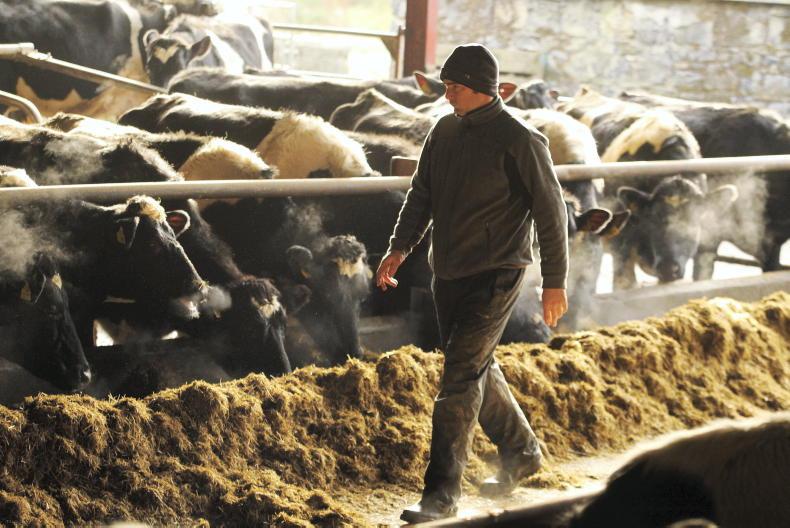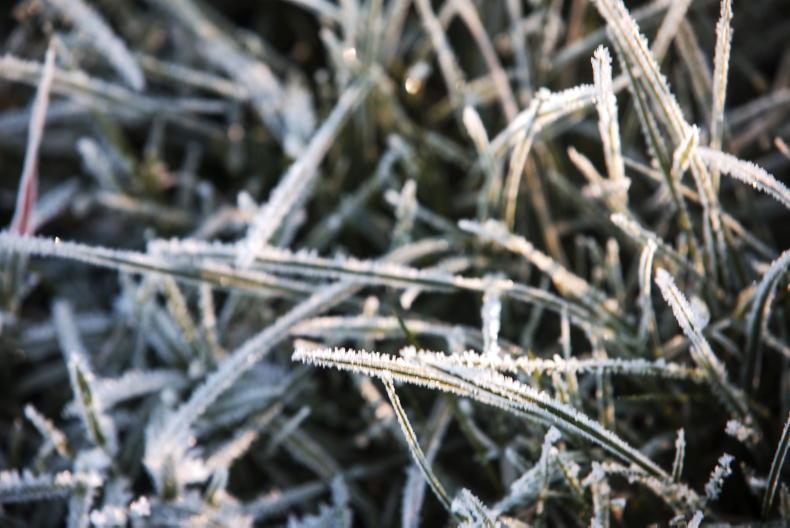We’ve had 80mm of rain in Clara over the past two weeks, which has completely burst the nice comfortable bubble that we were living in since calving started in January.
Ground is saturated in the dry fields and the wetter paddocks are somewhere on the graph between bogs and swamps.
It was great to have it so good for so long, but this couldn’t come at a worse time for all sectors of farming.
We are feeding 7kg of meal per head for the moment and as much silage as they can eat.
Milk yield is suffering at 27l and protein has dropped to 3.2%. Silage quality could be better.
We are working out of the second cut pit at the moment as we expected to be feeding more dry cows than milking cows at this stage of the year.
We closed the better-quality, first-cut pit to hold it in reserve for the summer, if necessary.
There’s not much else we can do but struggle through and wait for things to turn and for a bit of dry, sunny weather to give us a lift.
We are trying to keep a bit of grass in the diet whenever possible and get the cows out to the drier paddocks when we can to prevent injuries from bulling cows as much as anything. It’s difficult to know which is worse, a bit of poaching in the field or a cow with a cut teat or an injury from cubicles.
We are taking the view most days that the paddocks will recover quickly with some heat and sun.
We have 15 or more cows bulling most days, so the risk of an animal getting hurt is high enough.
Also, with the breeding season just around the corner it’s very important to keep a small amount of grass in the diet, if possible, and keep cows on as steady a plane of nutrition.
The maiden heifers are also doing a bit of damage on their paddocks and we are on the point of having to house these as well.
Again, the damage for the moment is superficial and will recover quickly as long as some fine weather comes soon enough. We are moving them daily and back-fencing, but the big issue will come the next time the heifers go into damaged paddocks.
Fine weather
We need to see some fine weather on the forecast soon to dry up ground before that happens or they will have to go back into the shed.
The mild and wet weather is encouraging plenty of grass growth at least so that there will be no shortage of feed when things do dry out and, as we get further into the spring, everything will turn very quickly when the sun does decide to come out. Hopefully this will all be a bad memory in another week or two.
Milk price
There is more bad news on the milk price front this week with another cut of 6c/l with most processors, including Tirlán.
With this cut, we are looking at almost 25% of a cut in the base price in just two months and before any meaningful volumes of milk are delivered for the season.
The milk price drop will cost farmers significantly and instantly
As usual, the price creeps up slowly in a rising market but goes into freefall very quickly on the downslope.
Feed and fertiliser, on the other hand, seem very slow to follow market trends downwards.
The milk price drop will cost farmers significantly and instantly, but we are also expected to take the hit on the expensive fertiliser and feed stocks instead of the merchants taking some of this pain.
We will have to keep plenty of pressure on over the coming months. Some fertiliser might have to be bought into the country directly by farmers at lower prices to rebalance the prices locally.
The merchants, and especially those in the milk business, will have to accept that they can’t expect to win on both sides of the ledger. They will have to take some of the hit on the inputs, if they are passing on all of the milk cuts.










SHARING OPTIONS